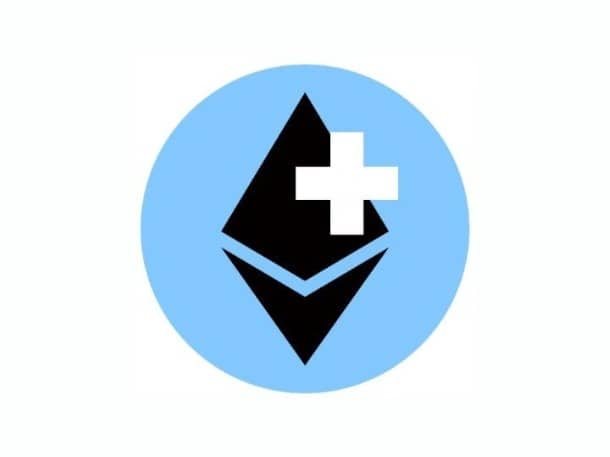ETHPlus
ETHPlus (ETH+) is a decentralized digital asset designed to provide diversified and yield-generating exposure to Ethereum's liquid staking ecosystem. Built on the Reserve Protocol, ETH+ aims to offer a safe and indexed approach to earning yield from staked Ethereum, while also contributing to the decentralization of Ethereum's staking distribution. [1] [2]
Overview
ETHPlus (ETH+) functions as an RToken within the Reserve Protocol framework, representing a basket of Ethereum Liquid Staking Tokens (LSTs). The project was introduced in April 2023 with a mandate to maintain an Ethereum-aligned LST basket, positively impact Ethereum's staking distribution, and provide value to ETH+ holders through diversification. Its design emphasizes passive yield generation and aims to simplify participation in the complex liquid staking landscape for users. The name "ETH+" was chosen to signify its alignment with Ethereum and its goal of providing diversified rewards, standing out from more complex token names in the LST space. [2]
Technology and Backing
ETHPlus is structured as an RToken, meaning it is 100% backed by a diversified set of underlying collateral tokens. A key feature of ETH+ is its over-collateralized protection, provided by RSR (Reserve Rights) stakers. In the event of a de-peg or loss of value in the underlying collateral, RSR tokens are sold off to cover losses, aiming to protect ETH+ holders.
The initial collateral backing for ETH+ consisted of 50% Rocket Pool ETH (rETH) and 50% Lido Wrapped Staked ETH (wstETH). This selection was based on their status as two of the largest LSTs in the Ethereum ecosystem, offering deep liquidity and diverse validator sets. The equal weighting was intended to encourage greater usage and adoption of rETH to promote a more equitable distribution of staked Ethereum, aligning with the project's mandate to positively impact staking distribution.
Over time, the collateral basket has been updated. As of current data, ETH+ is backed by four distinct liquid staking tokens:
- Stader ETHx;
- Staked Frax ETH (sfrxETH);
- Wrapped Staked ETH (wstETH);
- Rocket Pool ETH (rETH).
The specific proportions of these collaterals are dynamically managed, with Wrapped Staked ETH (wstETH) typically holding the largest share, followed by Staked Frax ETH and Rocket Pool ETH, and then Stader ETHx. The inclusion of new LSTs is dependent on technical integration and the availability of reliable Chainlink oracles for price monitoring.
It is important to note that ETH+ operates as a proxy contract, which means the contract owner has the ability to make code changes, including potentially disabling sells, altering fees, or minting and transferring tokens. Users are advised to exercise caution due to this mutable aspect. [1] [2] [3]
Tokenomics
The maximum supply of ETH+ is uncapped (∞). The revenue generated from the underlying staked assets in the ETH+ basket is distributed as follows:
- 95% is passed through directly to ETH+ RToken holders;
- 5% is distributed to RSR stakers, who provide governance and over-collateralized de-peg protection for the RToken.
This distribution model is designed to be competitive within the liquid staking market, ensuring attractive rewards for ETH+ holders while also incentivizing RSR stakers to provide security and governance. The collateral yield is distributed as revenue once the backing buffer, an extra collateral held to prevent RSR seizure from trading slippage, is full. [2] [3] [1]
Use Cases
ETHPlus is designed for users seeking passive yield exposure to Ethereum through a diversified basket of liquid staking tokens. Its primary use cases include:
- Passive Yield Generation: Holders can earn compounding rewards on their ETH without needing to actively manage individual liquid staking positions or rebalance their portfolios.
- Diversified Counterparty Risk: By holding a basket of LSTs, ETH+ aims to mitigate the risks associated with any single liquid staking provider.
- DeFi Integrations: ETH+ is intended to be easily integrated into various decentralized finance (DeFi) protocols, offering additional yield opportunities through liquidity pools and other mechanisms. It is actively traded on decentralized exchanges like Curve (Ethereum and Arbitrum) and Uniswap V3 (Ethereum).
- DAO Treasury Diversification: The token's reputation neutrality and diversified backing make it suitable for decentralized autonomous organizations (DAOs) looking to diversify their treasuries with yield-bearing assets.
Early adopters and advocates for ETH+ include individuals interested in staking ETH, DeFi enthusiasts seeking passive income, and yield farmers. The project aims for high liquidity and broad usability across Ethereum Layer 1 and Layer 2 solutions. [1] [3] [2]
Governance
The deployment of the ETHPlus RToken was initiated by Eridian, an active member of the Ethereum staking community and a solo Ethereum staker. Eridian is known for maintaining the EthStaker Knowledge Base and DVStakers, an educational resource focused on Distributed Validator Technology (DVT). Eridian's motivation for deploying ETH+ stemmed from the desire to expand the Ethereum staking ecosystem beyond the 32 ETH minimum for solo staking, enable compounding rewards, and simplify the increasingly complex Liquid Staking Derivative (LSD) landscape.
Governance of ETH+ is primarily conducted by RSR stakers. These stakers provide both governance and over-collateralized protection for the RToken. Their role involves active participation in forum discussions and voting on governance proposals, such as the inclusion or removal of underlying LSTs in the basket. This model aims to ensure that governance decisions are aligned with the best interests of the RToken and its holders, as RSR stakers have "skin in the game" through their staked tokens.
ETHPlus (ETH+) is traded on decentralized exchanges across the Ethereum and Arbitrum One networks. Key trading pairs include ETH+/EUSD and ETH+/WETH on platforms like Curve and Uniswap V3 [2] [3] [1] [4] [5]
